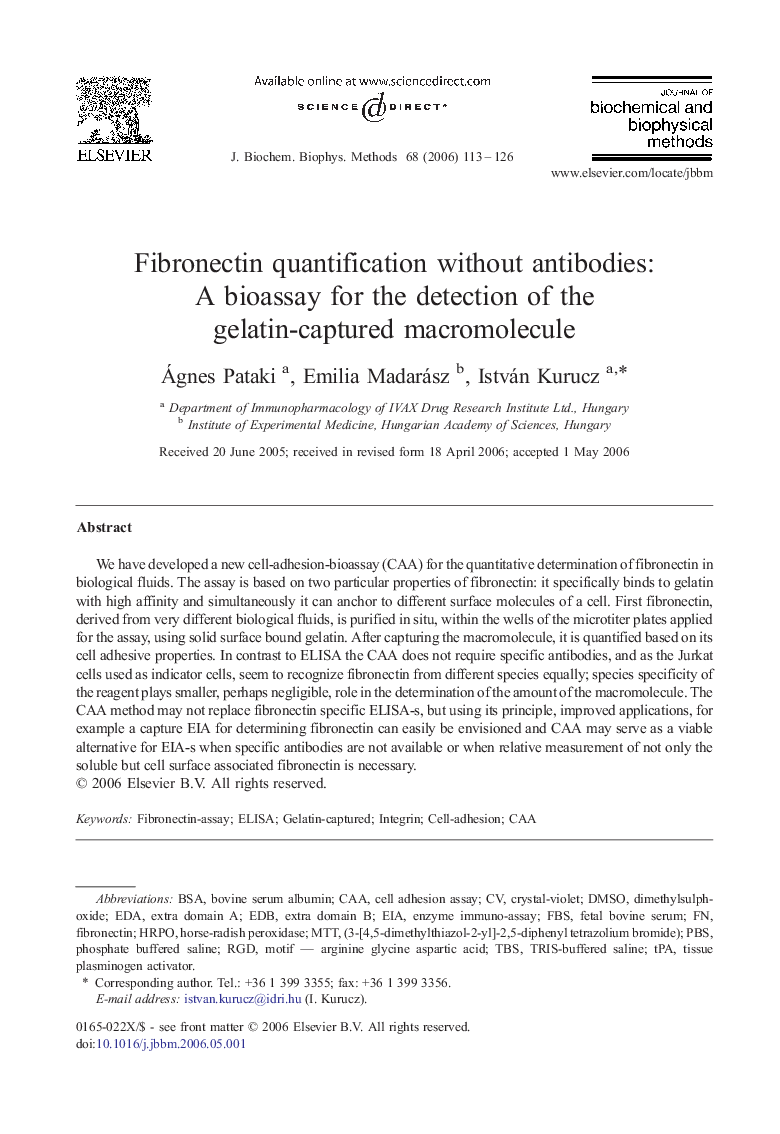| Article ID | Journal | Published Year | Pages | File Type |
|---|---|---|---|---|
| 1988624 | Journal of Biochemical and Biophysical Methods | 2006 | 14 Pages |
We have developed a new cell-adhesion-bioassay (CAA) for the quantitative determination of fibronectin in biological fluids. The assay is based on two particular properties of fibronectin: it specifically binds to gelatin with high affinity and simultaneously it can anchor to different surface molecules of a cell. First fibronectin, derived from very different biological fluids, is purified in situ, within the wells of the microtiter plates applied for the assay, using solid surface bound gelatin. After capturing the macromolecule, it is quantified based on its cell adhesive properties. In contrast to ELISA the CAA does not require specific antibodies, and as the Jurkat cells used as indicator cells, seem to recognize fibronectin from different species equally; species specificity of the reagent plays smaller, perhaps negligible, role in the determination of the amount of the macromolecule. The CAA method may not replace fibronectin specific ELISA-s, but using its principle, improved applications, for example a capture EIA for determining fibronectin can easily be envisioned and CAA may serve as a viable alternative for EIA-s when specific antibodies are not available or when relative measurement of not only the soluble but cell surface associated fibronectin is necessary.
